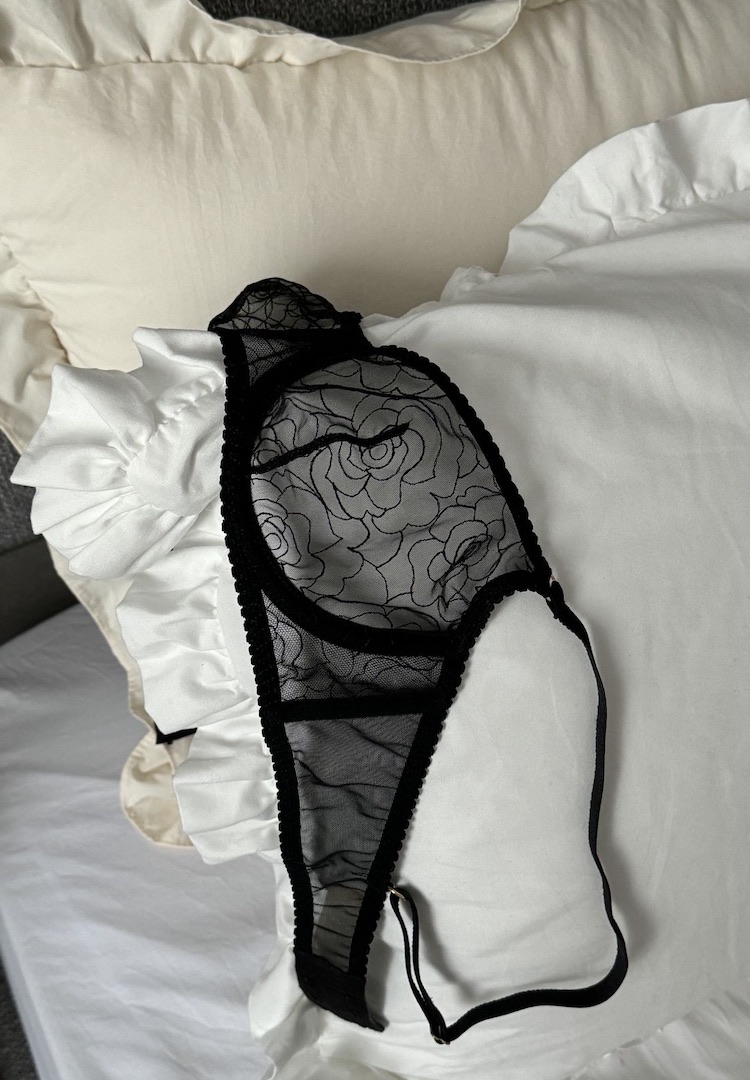How to protect your favourite underwear from discharge stains
Words by Gabrielle O’Hagan
For everyone with a vagina, it’s time we talked about discharge.
Our undies don’t always stand the test of time. If you have a vagina, you probably will have noticed a lightness, bleaching or general discolouration in the crotch area of your underwear at some point. More often than not, the culprit is vaginal discharge.
I’ll admit, the first time this happened to me, I felt embarrassed. No matter how vigilant I am when it comes to washing my delicates, some of them will still stain. Even if I’ve just pulled a fresh pair from the dryer or from my underwear drawer, there can be noticeable discolouration.
Looking for more thought-provoking reads? Try our Life section.
For the record, this is completely, 100 per cent normal. Anyone with a vagina will regularly produce discharge, and sometimes this will bleach your underwear.
Discharge is a mixture of fluid, dead cells and bacteria, and it serves two main purposes: providing your vagina with natural lubrication, and repelling unhealthy bacteria. Although discharge can vary from person to person, and changes depending on where you are in your menstrual cycle, healthy discharge is usually white or clear in colour and can have a faint odour.
Most of the time, discharge is totally normal. You should only be concerned if it changes dramatically in colour or consistency, has a strong or foul-smelling odour, or has traces of blood in it. If you experience any of these symptoms, then it’s important to visit your GP.
Just like other bodily secretions (like when you sweat), healthy vaginal discharge can leave a yellowish stain on your garments. Why? It’s naturally acidic. It needs to be, in order to keep the healthy bacteria alive and protect you from infections. Unfortunately, this acidity also means that your underwear can become bleached or discoloured when exposed to air.
But just because discharge is normal, it doesn’t mean it’s fun to deal with. Whether it’s ruining your prettiest, laciest lingerie, or just some plain cotton boylegs, throwing out a perfectly good pair of underwear can be frustrating.
How can I prevent my underwear from bleaching?
There’s nothing you can do to prevent vaginal discharge – and you shouldn’t try to, by the way. Instead, there are some steps you can add to your laundry routine to increase the shelf-life of your favourite pairs of underwear.
After each use, rinse your underwear in cold water as soon as possible (aka, while the discharge is still moist). This will help to prevent the fluid from setting into the fabric and staining it while you wait for laundry day. You can also soak the underwear in cold water with a little bit of mild laundry detergent before washing them on a cold, gentle cycle.
When they come out of the wash, it’s best to avoid using a machine dryer. Air dry your underwear away from direct sunlight, and preferably on a flat surface, to avoid bleaching and discolouration over time.
I think my underwear is already starting to stain, what do I do?
There will be some days that you experience heavier discharge than others, maybe because you’re ovulating, or because you’ve recently had sex. Whatever the reason, a simple rinse and wash might not cut it.
Enzymatic stain removers are a great way to break down discharge. Try spraying some directly onto the affected area prior to washing. If your underwear have already started to get a little crusty, go ahead and soak them in warm water with the enzymatic spray for a couple of hours, and then gently brush away the discharge with a spare toothbrush before machine washing (but maybe think about labelling the brush afterwards).
Hydrogen peroxide is also widely used as a multipurpose stain remover. Simply rinse your underwear in cold water, add a small amount of peroxide to the stained area/s, and then machine wash.
If you’re after something more natural, or you just don’t have any stain removers on hand, baking soda, fresh lemon juice or a pinch of salt are also great home remedies. Rinse the affected area, add your ingredient of choice, and gently rub it in. You can leave the formula on for a little while or repeat this process (depending on the severity of the stain), but remember to rinse it off before chucking your underwear in the wash.
Remember: different fabrics will have different care instructions, so don’t forget to double-check them beforehand. Hydrogen peroxide, lemon juice and salt are all best used on light-coloured underwear only, as they naturally bleach darker fabrics.
Things to avoid
It’s quite common for people to go down the pantyliner route to prevent bleaching. Pantyliners will create a physical barrier between your vulva and your underwear, and this can stop discharge from making contact with the fabric. But gynaecologists warn that regular use of panty liners can cause irritation and even contact dermatitis.
Another big no-no is using tampons to soak up your vaginal discharge. Wearing tampons when you’re not menstruating can lead to dryness, irritation and micro-tears when they’re eventually removed. Also, you’re far more likely to forget you’re wearing a tampon if you’re not on your period, which can heighten the risk of developing toxic shock syndrome.
Finally, don’t use a douche to try and prevent discharge. Your vagina is a self-cleaning organ. Inserting soap, water or feminine hygiene products can alter your natural pH and disrupt the delicate balance of bacteria. Douching increases the risk of developing yeast infections, bacterial vaginosis and STIs, which can (ironically) leave you with abnormal discharge.
For the most part, discharge is not only normal, it’s healthy. So instead of pretending it’s some gross, shameful secret that you need to hide, try these simple steps to help your lingerie to last longer.
This article was originally published on February 17, 2022.
For more information on cleaning different types of underwear, head here.













